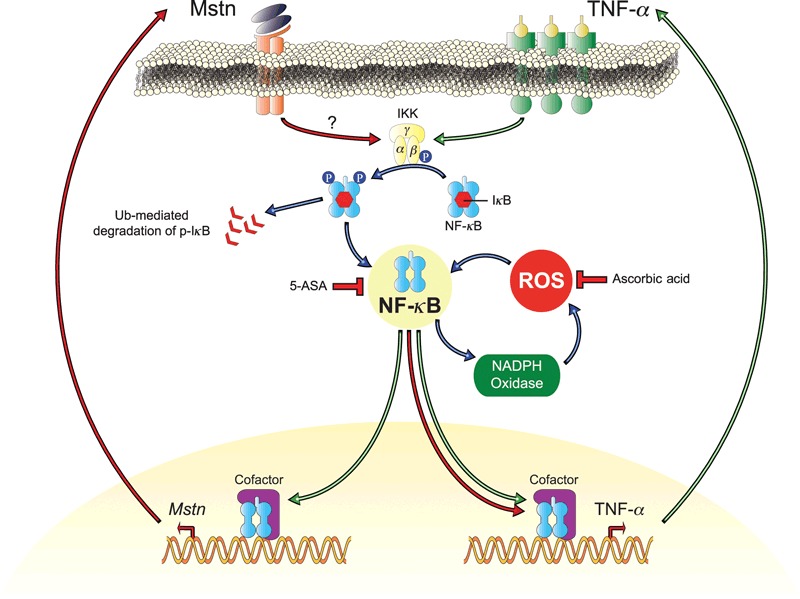Figure 9.

Proposed mechanism by which myostatin (Mstn) induces reactive oxygen species (ROS) in skeletal muscle. Increased Mstn induces tumor necrosis factor‐α (TNF‐α) production via NF‐κB signaling, increasing the production of ROS by NADPH oxidase. The induced ROS results in a feed forward loop further increasing Mstn levels via NF‐κB signaling of TNF‐α. The increased ROS levels result in a decrease in muscle protein synthesis and an increase in protein degradation leading to skeletal muscle wasting. 5‐ASA and ascorbic acid block these pathways to reduce ROS, Mstn, and TNF‐α.
